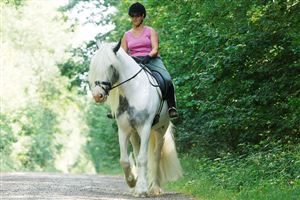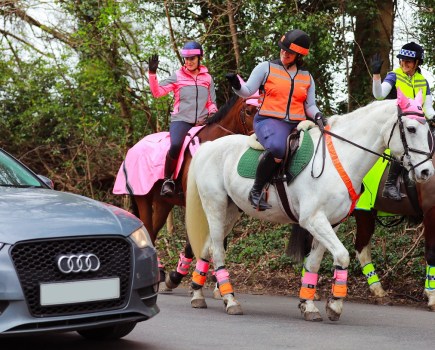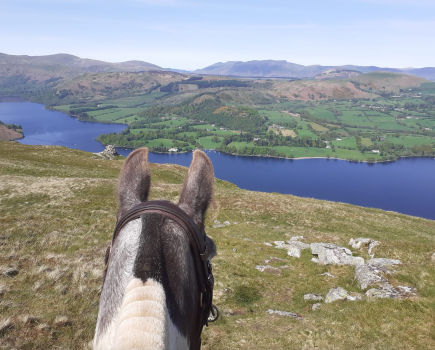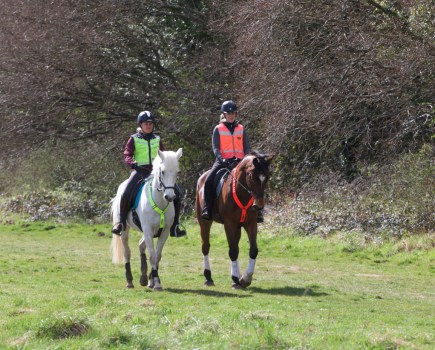Incorporating schooling exercises into your hack is a great way to get your horse concentrating on you, rather than looking for things to spook at. Try to have a schooling plan in mind and work on getting your horse to listen to your aids making sure you’re clear about what you want to achieve. Most importantly, don’t get so caught up concentrating on practising shoulder-in past a hedge that you forget to listen out for passing cars and cyclists!
Transitions
Working on your transitions will encourage your horse to respond to your leg and pay attention to your aids. Expect him to be as responsive on a hack as he is in school and make regular changes of pace to keep his attention. Try walking for five strides, trotting for 20, walking for 10, then halting, etc. Also, get in the habit of asking your horse to halt, stand quietly for a few moments, then walk off again – all good practice if you show and your horse need to learn to stand in line.
Shoulder-in
In shoulder-in your horse moves forward in a straight line, but is bent slightly around your inside leg, looking away from the direction he’s travelling. If you imagine you’re passing a pile of rubbish, you need to ride straight and ask for a slight flexion to the inside (away from the rubbish pile) with your inside rein.
Drop your weight down through your inside hip and into your inside leg to create an inside bend with your body. As the weight flows into your lower leg, move your inside seat bone forwards a fraction and in – so your hip is slightly over your knee. Get it right and he’ll be able to safely pass the rubbish, while keeping his body nice and tucked into the verge, away from traffic.
Shallow loops
A great way to keep your horse’s mind occupied and keep him listening as you weave in and out of bushes and trees along a bridleway, riding shallow loops and serpentines will alos help to improve his flexibility.
To weave in and out, ask for a bend as you would when schooling. Collect your hose with a half-halt, put your weight into your right leg (if you’re bending to the right) so it wraps around your horse, and nudge your right seat bone slightly forward so your inside leg can ask for bend. Nudge your left seat bone back, as this moves your left leg back and behind the girth to steady the quarters. Imagine wrapping your horse around your inside leg to ride the first shallow loop (to the right), then reverse your aids to ask for a bend to the left.









